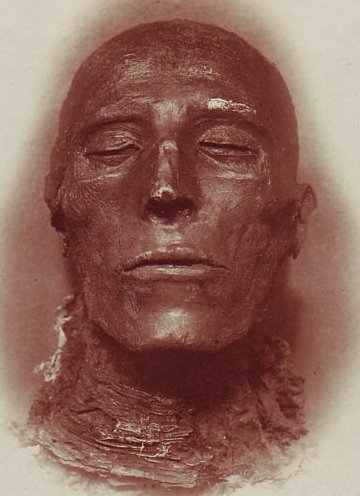

“Redmoat” was the third installment of Sax Rohmer’s serial Fu-Manchu, first published in THE STORY-TELLER in December 1912. The story would later comprise Chapters 7-9 of the novel The Mystery of Dr. Fu-Manchu (re-titled The Insidious Dr. Fu-Manchu for U.S. publication) in 1913. “Redmoat” is significant for delving into the aftermath of the Boxer Uprising. As we discussed in Part Three, this conflict leant credence to the Yellow Peril fiction that had been steadily gaining in popularity over the preceding fifty years. More importantly for our purpose, the Boxer Uprising provided a motive for Dr. Fu-Manchu’s actions.
There are two principal supporting players to the story who are worthy of greater consideration. The first is the Reverend J. D. Eltham. Reverend Eltham had earned a name for himself during his missionary days in China as “Parson Dan.” Nayland Smith tells Dr. Petrie that Eltham held off two hundred Boxers at a hospital in Nan-Yang with only a garrison of a dozen cripples and a German doctor for support. The heroic clergyman’s evangelical zeal had resulted, according to Smith, in the Boxer Uprising. While ascribing the blame for that conflict on a single missionary is more than a bit implausible, it is interesting that Rohmer, an Edwardian author, took a critical view of the British Empire and recognized that intolerance to Chinese culture not only hindered the goal of religious conversion, but sparked China’s decision to drive the foreigners out of their country by whatever means necessary.
The other supporting character of import is Eltham’s daughter, Greba. It has long been a convention of pulp fiction that supporting players who do not fit the mould of the virile hero instead play the part of the absentminded scientist or the irascible elder statesman. These characters are usually brilliant, but require the hero to defend or rescue them. Such characters are usually widowers or confirmed bachelors whose all-consuming passion is their vocation. They frequently have nubile daughters, granddaughters, or nieces in tow to soften them and play damsel in distress and, ultimately, serve as the reward for the hero upon completion of his trials. Greba Eltham fits this mould in one sense, but in another marks a definite departure for the genre.
The female supporting player in the first two Fu-Manchu stories (“The Zayat Kiss” and “The Clue of the Pigtail”) was Fu-Manchu’s as yet unnamed slave girl who has twice risked her life to save Petrie from the fate ordained by her master. Greba Eltham takes this role in “Redmoat” and for that purpose must be distinguished from her father. Rohmer accomplishes this by having Petrie note Greba’s classical beauty upon her first appearance in the story. There is no greater compliment paid in Rohmer’s fictional universe than having one’s likeness compared to a noble personage. Nayland Smith describes Fu-Manchu, the object of his obsession, as having a “brow like Shakespeare and a face like Satan,” so Petrie describes Greba Eltham, the object of his attraction, as resembling “a young Diana” and notes her “clear complexion…sun-kissed arms” and her round and firm shape. Additionally, the aligning of Greba Eltham with classical beauty is necessary to delineate the essential difference in her character from her father.
Reverend Eltham’s estate, Redmoat is tellingly a former Roman outpost on British soil. Greba’s father has fortified the estate with an elaborate security system after having previously transformed its drained moat into a garden. The typical Edwardian as represented by Reverend Eltham has little appreciation for the beauty of the past. This is what separates Smith and Petrie from their fellow men and binds them as friends. It is the quality that enables them to appreciate the uncorrupted beauty of the East. They are, like their creator, men out of time. Old souls trapped in the twentieth century but wishing for a simpler world more suited to their temperaments.
Reverend Eltham makes, as Smith wryly notes, a poor evangelist. He does not understand human nature. He lacks an appreciation of foreign cultures as much as his own nation’s history. Men like Eltham can only destroy for they lack the sensitivity and empathy to preserve or respect that which exists outside their limited scope. Interestingly, Eltham is a hero in the eyes of the British Empire and yet, he is hardly portrayed as a sympathetic character. Petrie is surprised when he learns of Eltham’s role in the Boxer Uprising for he viewed the clergyman as soft-spoken and meek, yet Petrie will come to detect a fire in Eltham’s eyes at odd moments. Eltham is a man with a storied past far removed from the respectability a Man of God was expected to command at the turn of the last century.
The fact that Eltham survives his encounter with Dr. Fu-Manchu is only because he agrees to abandon his plans to return to China. Once again, Dr. Fu-Manchu acts with honor and shows himself superior to the imperialist British heroes. Fu-Manchu, like Smith and Petrie, is able to reconcile the Old World with the New. More importantly, like China during the Boxer Uprising – Dr. Fu-Manchu wants only to remove the threat to his nation, not overrun the West. The strength of the Yellow Peril myth is it appeals to fear rather than fact. It is Reverend Eltham who most clearly represents the proponents of the Yellow Peril even more than the colonialist Nayland Smith for it is Eltham who lacks the empathy that is essential to bridging cultures. It is deeply ironic that Sax Rohmer’s Fu-Manchu stories, long-derided as racist and jingoistic, actually represent a more enlightened view of the East and beneath the exotic mystery and thrills, their author repeatedly demonstrates that the differences between East and West are reconcilable.


.jpg)
No comments:
Post a Comment